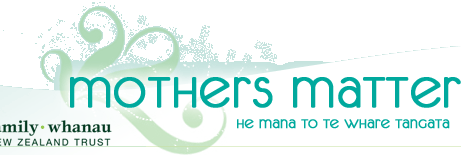 |

Venlafaxine
This section is written for medical professionals.
For consumer information, see Fact sheet on venlafaxine
- Venlafaxine is licensed in New Zealand for treatment of depression, generalised anxiety disorder (GAD), social anxiety disorder (SAD) or social phobia, and panic disorder.
- Available as Efexor XR.
- Last updated: November 2010.
Summary
Venlafaxine:
- is not associated with major congenital malformations.
- has not been studied as much as SSRIs
- is associated with neonatal adaptation syndrome (NAS),with some case reports of adverse outcomes.
- Limited data makes it hard to give clear guidelines regarding its safety in breastfeeding.
The decision to use psychotropic medication in pregnancy and breast feeding should be made weighing up the risks versus the benefits in each individual case. It should involve an informed choice between patient and clinician.
General Usage
- In depressive illness it is at least as effective as the other main groups of antidepressants.
- Side-effect profile, while better than the TCAs is not quite as favourable as the SSRIs.
- In New Zealand, to qualify for full subsidy, two other antidepressants must have been tried before venlafaxine (Apply to Pharmac)
- Blocks the re-uptake of serotonin (5-HT) and, with somewhat less strength, it also blocks the reuptake of noradrenaline (NA) also known as norephidrine (NE) (see earlier section on action of medications).
Use in Pregnancy
Category C
- There has been one multi-centre case control study (1) evaluating pregnancy outcome following exposure to venlafaxine in pregnancy (n=150), SSRIs(n=150), and other drugs (n=150). It revealed no evidence that venlafaxine increase the risk of major congenital malformations. The doses of venlafaxine used were relatively low.
- In a case series of 10 women who were treated with venlafaxine during part of their first trimester (12), eight had healthy babies and two decided to terminate the pregnancy. All of the infants were followed up for 12 months and none had congenital or developmental abnormalities.
- In a systemic review of the effects of antidepressants in pregnancy (14) 35 studies relating to congenital malformations were found. Only 10 of these studies included women who had taken venlafaxine and no statistically significant conclusion regarding venlafaxine could be drawn.
- In a recent study (13) using a nested case-control study design with data from the Quebec Pregnancy Register for 5124 women, a total of 284 (5.5%)women whom had a spontaneous abortion had at least one prescription
for an antidepressant filled during their pregnancy, compared to 1401 (2.7%) of the matched controls (odds ratio 2.09). The use of antidepressants during pregnancy was associated with an increased risk of spontaneous abortion (odds ratio 1.68) after adjustment for potential confounders. They demonstrated that paroxetine use alone, or venlafaxine use alone, were associated with an increased risk of spontaneous abortion (odds ratio 1.75 and 2.11 respectively).
- Neonatal adaptation syndrome (NAS) can occur in infants of mothers who have used antidepressants near term. It is not certain whether this is due to perinatal toxicity or a discontinuation syndrome. Generally NAS symptoms in the newborn infant resolve spontaneously. However, there have been some case reports of adverse NAS events.
- In one study (3) it was thought that infants exposed to venlafaxine experienced similar effects to those exposed to SSRIs. In another study (10) seven infants exposed to low dose venlafaxine in utero were monitored for NAS. Five had time-limited tachypnoea and respiratory distress, which coincided with decreasing baby plasma levels of venlafaxine, supporting a discontinuation-like syndrome.
- Two cases of neonatal seizures after in utero exposure have been documented (11). One required assisted ventilation, however this case was complicated by maternal use of the prescribed antihypertensive agent, labetalol. Both mothers were on moderate doses of venlafaxine (150 mg, 225 mg). Unfortunately neither maternal and infant plasma venlafaxine concentrations were determined.
- In a rare case (8) twins whom had been exposed to maternal low dose venlafaxine required ventilatory support then later developed necrotising enterocolitis. Complicating this case was the neonate’s prematurity and maternal and baby infections.
- One study measured amniotic fluid to maternal serum ratios in three women taking venlafaxine (2). Levels were very variable but much higher for venlafaxine than for SSRIs. The amount ingested by the fetus was, however, small (0.05mg/d).
Use in Breast Feeding
Category L3
- A limited number of studies to date (4, 5, 6) suggests that venlafaxine is possibly safe in breastfeeding.
- A maternal weight-adjusted dose is about 6-7% (which is within the national safe level of less than 10%) but is higher than for SSRIs and may approach 10% in some infants.
- This has been further investigated in 13 mothers/ infant maternal weight-adjusted dose averaged 8.1% but individual infants ranged significantly (3.2%–13.3%)(9).
Clinical Scenario
A 36 year old woman with a history of moderately severe recurrent depression which has been stabilised on venlafaxine 225mg, presents requesting your opinion about whether to stay on this medication as she is planning to get pregnant.
Perinatal Psychiatrist;
"Presumably she has been on at least two other antidepressants with either minimal effect or intolerable side effects so a switch to these is not an option.
Did this include a tricyclic? – If not it may be worth considering a change to nortriptyline – but remember that her illness is serious and has the potential to be very disabling. Changing medication runs the risk of destabilising her. A careful and slow reduction in dose is worth considering especially for the early part of her pregnancy. Venlafaxine is not known to cause any congenital malformations, although there are relatively few studies looking at this. It may cause some neonatal toxicity and increase the risk of miscarriage.
It is essential to meet her partner and discuss the issues openly, inform them of the potential dangers of untreated depression in pregnancy and postpartum (see section on untreated illness, pregnancy) and offer further appointments and follow-up irrespective of whether she decides to continue or discontinue medication. If appropriate remind her of the dangers of cigarette and marijuana smoking and alcohol, which are much greater than the use of venlafaxine."
References
(1) Einarson, A., et al. Pregnancy outcome following gestational exposure to Venlafaxine: a multicenter
prospective controlled study. Am J Psych (2001) 158: 1728-1730.
(2) Loughhead, A., et al. Antidepressants in amniotic fluid: another route of fetal exposure. Am J Psych (2006)
163: 145-147.
(3) Ferreira, E., et al. Effects of selective serotonin reuptake inhibitors and Venlafaxine during pregnancy in term
and preterm neonates. Pediatrics (2007) 119: 52-59.
(4) Islett, KF., et al. Distribution and excretion of Venlafaxine and O-desmethylvenlafaxine in human milk. Brit J
Clin Pharm (1998) 45: 459-462.
(5) Islett, KF., et al. Distribution of Venlafaxine and it’s O-desmethyl metabolite in human milk and their effects in
breast fed infants. Brit J Clin Pharm (2002) 53: 17-22.
(6) Hendrik, V., et al. Venlafaxine and breast feeding. Am J Psych (2001) 158(12): 2089-2090.
(7) Koren, G., et al. Can Venlafaxine in breast milk attenuate the norepinephrine and serotonin reuptake
neaonatal withdrawal syndrome? J Obstet Gynae Canada (2006) 28(4): 299-302.
(8) Treichel, M., et al. Is there a correlation between Venlafaxine therapy during pregnancy and a higher
incidence of necrotizing enterocolitis? World J Pediatr (2009) 5(1): 65-67.
(9) Newport, J., et al. Venlafaxine in human breast milk and nursing infant plasma: determination of exposure. J
Clin Psychiatry (2009) 70(9): 1304-1310.
(10) Boucher, N., et al. Maternal use of Venlafaxine near term: correlation between neonatal effects and plasma
concentrations. Ther Drug Monit (2009) 31: 404-409.
(11) Pakalapati, RK., et al. Neonatal seizures from in utero Venlafaxine exposure. J Paed Child Health (2006) 42:
737-738.
(12) Yaris, F., et al. Newer antidepressants in pregnancy: prospective outcomes in a case series. Reprod
Toxicology (2004) 19: 235-238.
(13) Nakhai-Pour, HR., et al. Use of antidepressants during pregnancy and the risk of spontaneous abortion.
CMAJ (2010) DOI: 10.1503/cmaj.091208.
(14) Udechuku,A., Nguyen T., Hill R., Szego K. Antidepressants in pregnancy: a systematic review. Australian and New Zealand Journal of psychiatry (2010) 44:978-996.
V
|
 |



